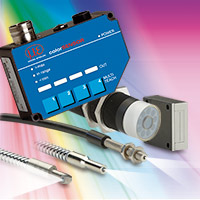 |
(Micro-Epsilon: Ortenburg, Germany) -- The new colorSENSOR product group from Micro-Epsilon offers exactly the right sensor for a large number of applications. Color sensors that operate via optical fibers are designated as colorSENSOR LT. In these models, the sensor is connected to an optical fiber that is guided to the measurement target. This way, color detection takes place very close to the object, reducing any environmental influences. Micro-Epsilon can offer numerous sensor/optical fiber combinations because it keeps many fiber-optic cables and lenses available for allowing flexible adjustment to the task at hand.
|
ADVERTISEMENT |
The second group works by means of fixed optical systems. The colorSENSOR OT sensors recognize the color of the object from a great distance. Different models are suitable for different surfaces and materials. Depending on the lens and illumination involved, the correct sensor will provide optimal results.
…
Add new comment